As summer draws to a close and the days become shorter, I always feel a little bit wistful as I put my hot peppers to bed for the winter.
Armed with a freezer full of more peppers than anyone can possibly eat, I’ll still miss the fresh taste of my homegrown crop.
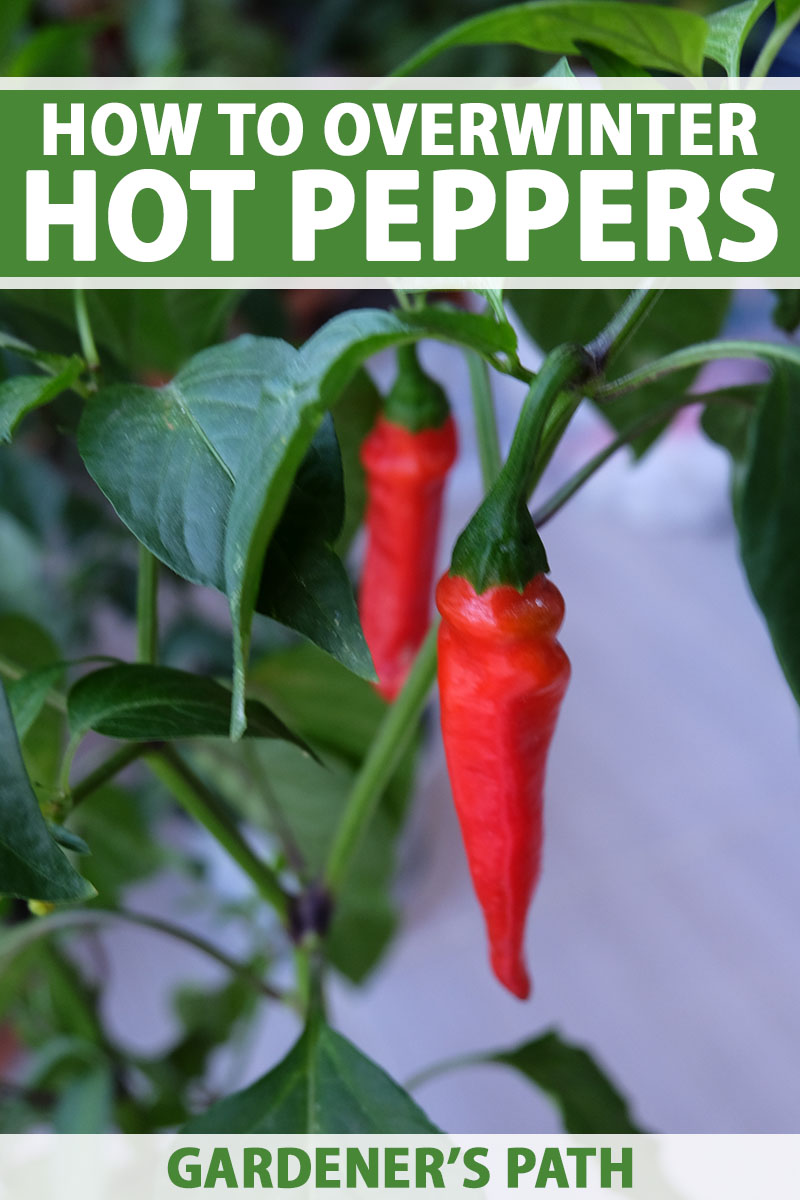
We link to vendors to help you find relevant products. If you buy from one of our links, we may earn a commission.
Many gardeners treat hot peppers as annuals, and simply start new ones from seed in the winter months, ready to set out when the weather warms up in spring.
I used to do this, but over the years as my “pepper obsession” grew, so did my collection of unusual varieties.
Last season, I overwintered 38 hot peppers.
Yes, I was a little bit surprised when I actually counted them. Some of them were small – ones I’d started too late and had only produced a modest amount of fruit. Others were in their fourth year of wintering-over.
I’ll confess, I lost a few, which is to be expected.
Hot peppers can be temperamental to grow, and one or two of the smaller ones simply failed to thrive. Another, a big, beautiful habanero, seemed to suffer and only produced small quantities of tiny fruit.
He was old, so I thanked him for his service and put “big hab,” as I called him, onto the compost pile. He’d survived three Zone 9 winters, and I guess he’d just had enough.
In this guide I’m going to walk you through how to prepare hot pepper plants for the winter, so if you’ve got a favorite growing this year, you can give it a try!
Here’s what I’ll cover:
What You’ll Learn
Why Overwinter Hot Peppers?
Hot peppers are tropical and subtropical perennial species in the Capsicum genus.
They are frost-tender and when nighttime temperatures drop to below 60°F and the days become shorter they will start to go dormant and drop their leaves.
Temperatures below 35°F will kill the plant.
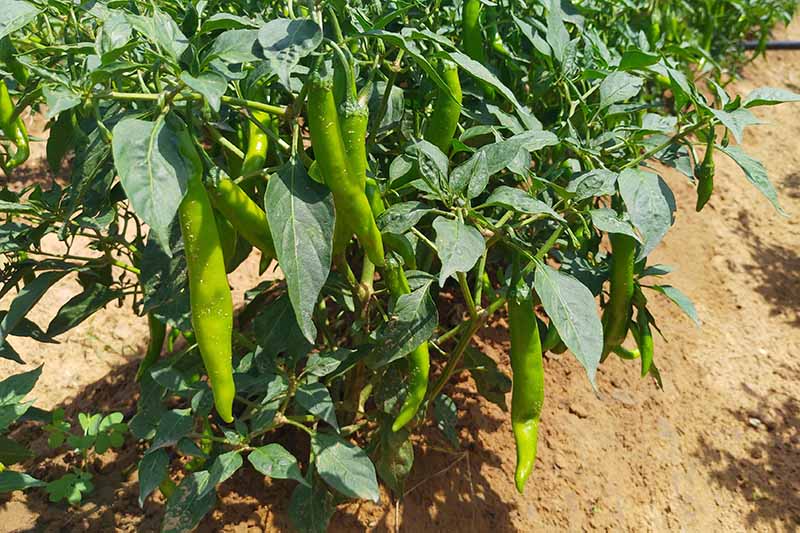
In tropical gardens, it’s possible for plants to fruit year-round, when they are provided with the ample sunshine and warmth they require.
In cooler locations, with a bit of preparation, we can let them go dormant for the winter months and in some cases, they’ll bounce back come spring, ready to fruit in the warm weather.
I say “in some cases” because not all plants survive the overwintering process, for a variety of reasons. It may be that the plant was suffering from lack of nutrition during the growing season, or the temperature dipped a little bit too low – or perhaps it took offense to your pruning methods.
Make sure you choose your strongest, healthiest looking specimens as weaker ones aren’t likely to survive.
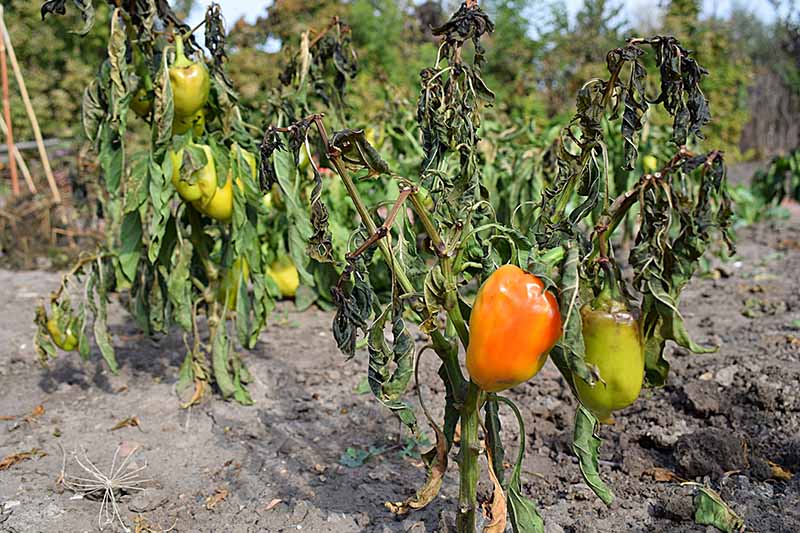
I’ve had good success with the majority of my hot peppers, but as mentioned, I expect to lose a few. Which is why from the middle of winter my grow tent is filled with a number of seedlings – and my electricity bill is suffering.
With their mind-numbingly long growing season, it may come as a surprise that the “super hot” peppers seem to be more successful at overwintering than some of their less mind-blowing brethren.
In my experience, jalapenos often don’t make it, but my favorite brain-melter, the ghost pepper, seems to come back flying and fruiting after a long day’s journey into the winter night.
Would you like to try your hand at growing ghost peppers? If so, check out our growing guide to learn more.
The main advantage of overwintering those long-season super-hots is that while you are waiting for seeds to germinate, for seedlings to develop their first true leaves, battling pests, and patiently hoping for a fruit to develop – your overwintered plants are out of the starting gates faster than Secretariat.
Those that have wintered-over have strong root systems which allows them to get going with the serious business of reproduction much earlier than all those babies carefully tended in a grow tent – or on your windowsill, depending on how far your pepper obsession has progressed.
I haven’t (yet?) got to the point where I keep my plants in artificial warmth and light so that they fruit year-round. That’s next-level obsession and I’d better have shares in the local electricity company first…
How to Prepare Your Hot Peppers for Winter
There are a few steps you need to take before you put your hot peppers to bed for the winter and they’ll require a little bit of maintenance over the cold months.
If you’re growing your peppers in the ground, you’ll need to pot them up. In frost-free locations, your plants may be overwintered in place.
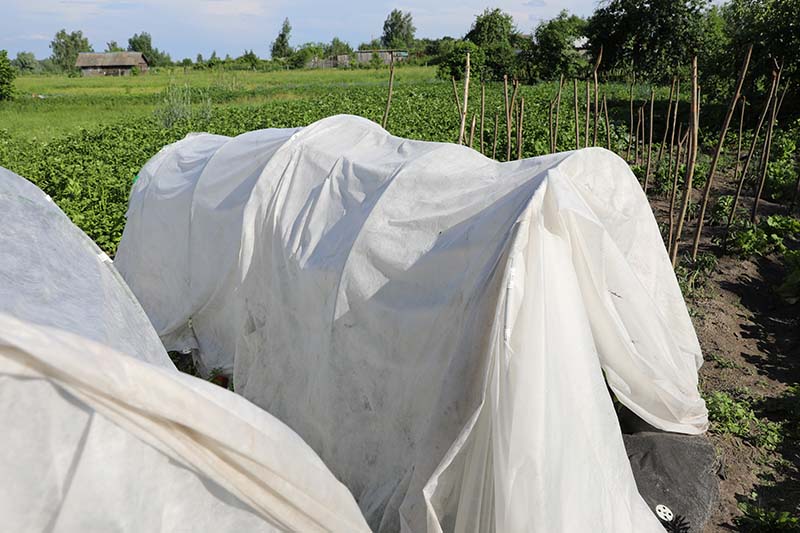
To do this, follow the pruning directions described below and apply a thick layer of winter mulch and if necessary, wrap the stems in fleece covers, such as these, available on Amazon.
If the word “frost” features in your climate, you’ll need to pot up your plants and bring them into your home – or a garage, shed, or greenhouse. Ideally, the temperature of your chosen location will remain between 50-60°F for the duration of the winter months.
Your plants may survive if the temperature drops below this for a short period of time, but you’re heading into risky territory.
If you choose to bring your plants into your home where the temperature is higher, it’s possible that they will not go completely dormant. In their semi-dormant state, you may find a little bit of slow growth throughout the colder months.
Pot Them Up
Hot peppers can be a bit bad-tempered about transplanting, so you’ll need to do this very carefully – and keep in mind that the stress of digging up and potting up might cause your overwintering efforts to come to naught.
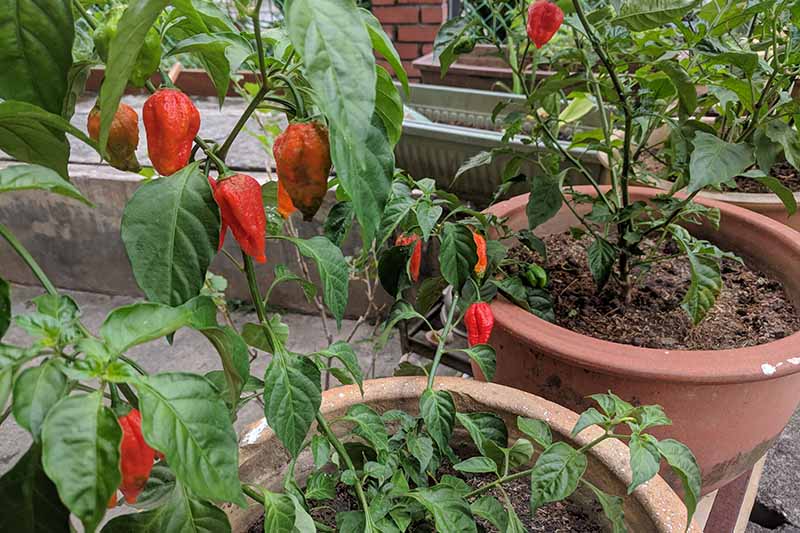
In fall, before nighttime temperatures start to dip below 55-60°C, you’ll need to dig up your plants. At this point they may still have some ripe or unripe peppers.
You can choose to do one final harvest before you dig it up or leave them on the plant to continue ripening before you prune and put it to bed.
For best results, it’s very important to avoid damaging the root ball. Depending on the size of your plant, mark out a radius of four to six inches around the stem, and dig down six to eight inches.
Gently lift the plant out of the ground and shake it lightly to dislodge any loose soil. Place in a clean pot that’s a bit larger than the size of the root ball.
I like to use fresh, well-draining potting soil to fill around the root ball. Water in well, and move the pot to a sunny, sheltered spot for up to a week.
Or if you’ve left it a bit late, and your plant has already dropped some of its foliage, you’ll want to prune as described below, and put it to bed in your chosen location.
Prune
When you’ve potted up your plants, or if you are already growing your peppers in containers, before you put them away for the winter and let them go dormant, you’ll need to give them a good pruning.

Before you get started, inspect your plants carefully for any signs of pest or disease issues. If you find whiteflies or aphids, give them a blast of water from the hose or a light dose of neem oil or insecticidal soap.
Those suffering from signs of disease are not good candidates for overwintering.
Remove any mulch from around the potted plants and check the soil for ants. You want to avoid bringing pests indoors for the winter.
During the colder months, in their period of dormancy, the plants won’t be putting their energy into new growth and they will be ready to fire into action next spring.
If the root system is healthy, your peppers can handle quite a severe pruning. To begin with, you’ll need to remove all the fruit from the plant – both ripe and unripe.
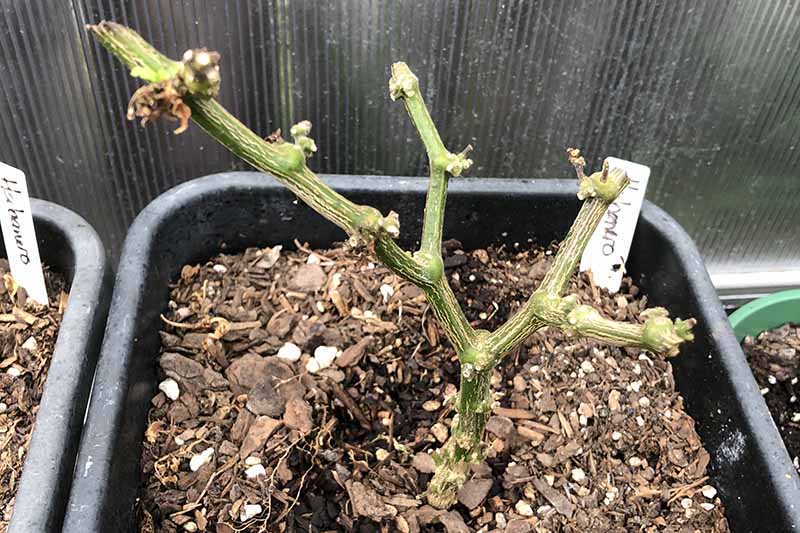
In the past, I’ve brought plants laden with almost-ripe fruit into the house for two to three weeks to keep them warm and allow the fruit to finish ripening, but in the lower light environment, you’ll see the leaves start to yellow and drop.
With my smaller plants – those that have one main stem and only very little branching, I prune them by two-thirds.
For my larger plants, particularly those that have already been overwintered in the past, I give them a severe haircut. Right down to the first leaf node on each branching stem.
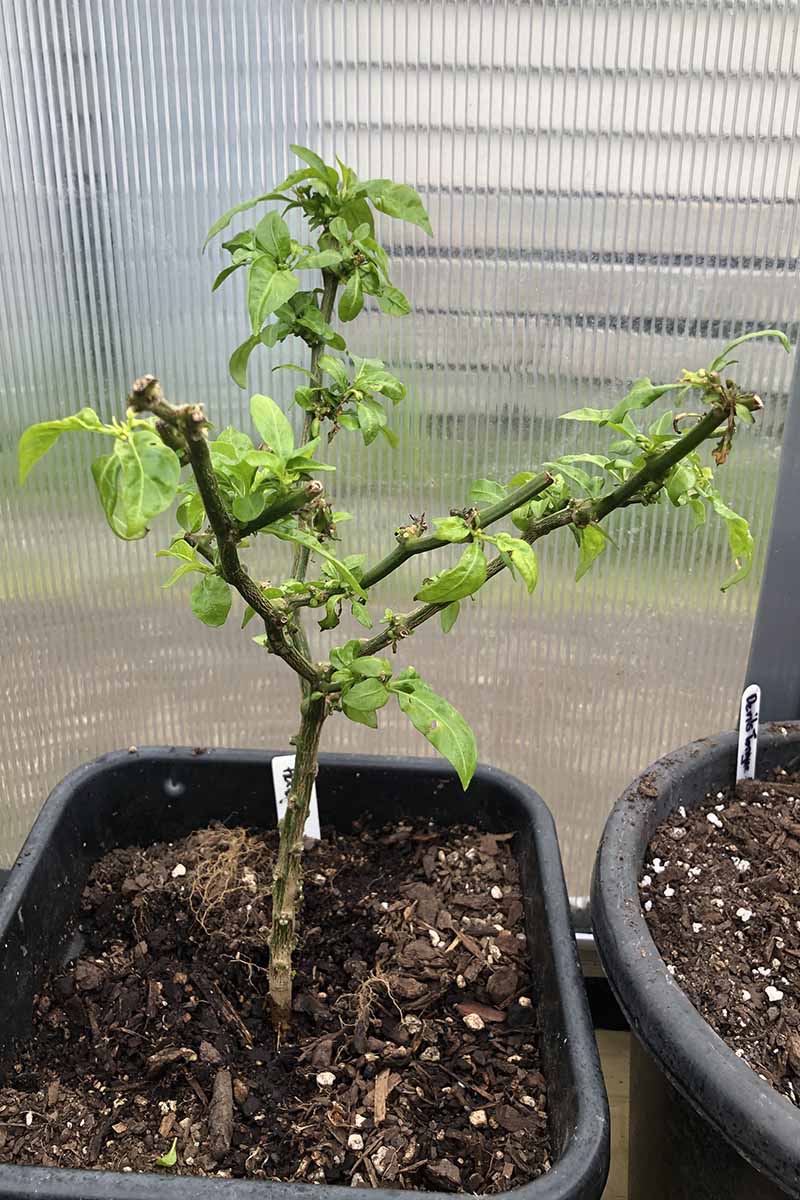
You’ll notice that your pepper plants have a number of “V” shaped branches growing off the main stem. Your goal is to cut down the plant so that you have three to five “V” shapes left, depending on the size.
Remove all the foliage. And then spend the next few hours worrying whether you have killed your plant. Time will tell!
To Repot or Not?
Some pepper growers like to repot their plants at the same time as pruning.
I don’t typically do this, but I’m diligent about repotting during the growing season, before the plants set fruit. This past season I did an experiment in which I repotted one of my smaller specimens just after pruning.
It survived the winter quite happily and gave me roughly the same harvest as the other small guys who I repotted as I usually do – in spring – after new growth has started to appear.
The way I have had success is to ensure that the plants are repotted as needed during the growing season so that by the time winter rolls around, they are already in a container of a suitable size.
Fertilize and Mulch
It may seem counterintuitive to apply fertilizer before overwintering, but I have found that a dose of slow-release balanced fertilizer such as 5-5-5 (NPK) can set them up for a good start come springtime.
After you have finished pruning, apply granular fertilizer to the top of the soil in your container, and water in well. If desired, you can apply a new layer of mulch – chopped leaves, fine bark, or straw is ideal.
Mulching helps to keep the roots a little bit warmer and prevents the soil from drying out completely.
Winter Care
Care of your plants during their dormancy couldn’t be easier. I place my pots in a shed that has a bit of natural light coming in through the windows and I check them once every two to three weeks, depending on how well my memory is working.
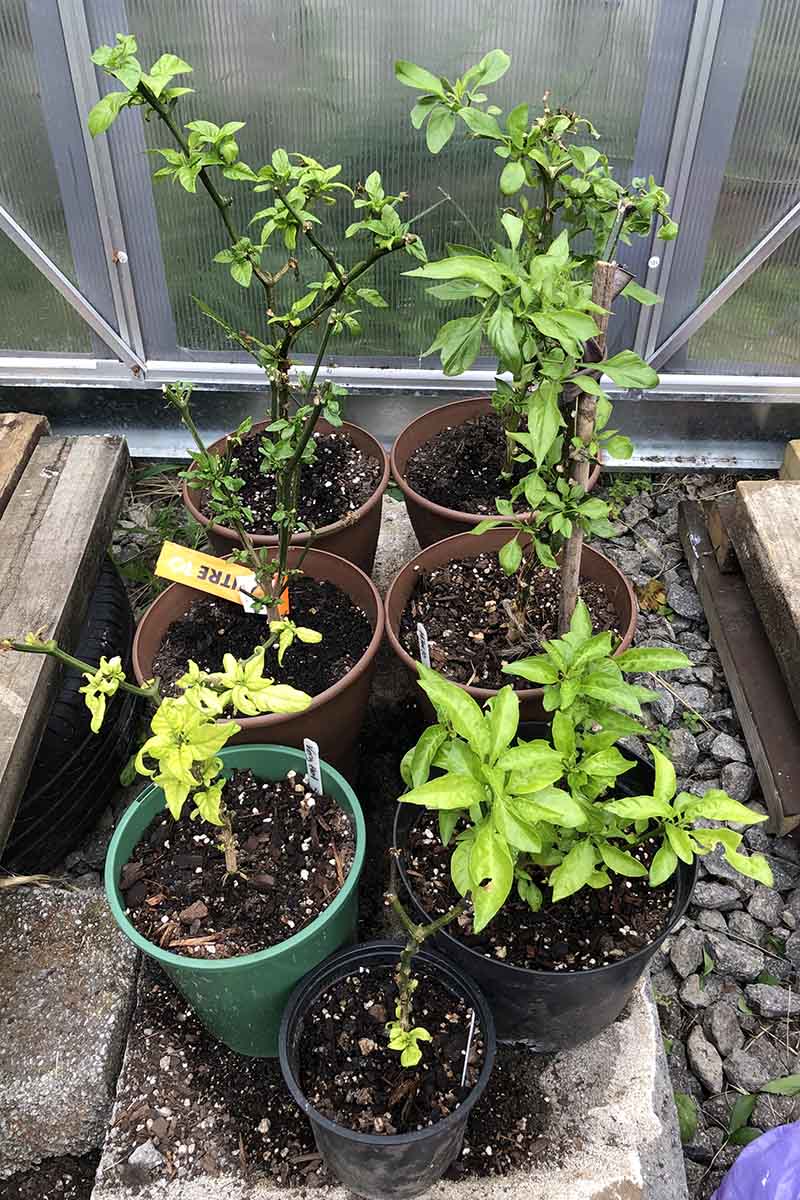
They will require minimal water, but don’t allow the soil to dry out completely.
I give mine water when the soil is dry to one or two inches down – depending on the size of the pot. If you have applied mulch, this may be once every three to four weeks – or more frequently.
If you’re not sure, you can use a moisture meter to check the level in the soil.

I use this one available on Amazon, and when the reading shows between two and three at one inch deep, it’s time to water.
Keep an eye out for pests as well. I seem to have a particularly robust type of aphid inhabiting my outbuildings and even in the deepest of my Zone 9 winter I’ve given my plants a spray with neem oil or insecticidal soap to get rid of the little blighters.
Prepare for Spring
You’ve waited patiently through those cold winter months and your supply of dried and frozen peppers is dwindling, so what now?
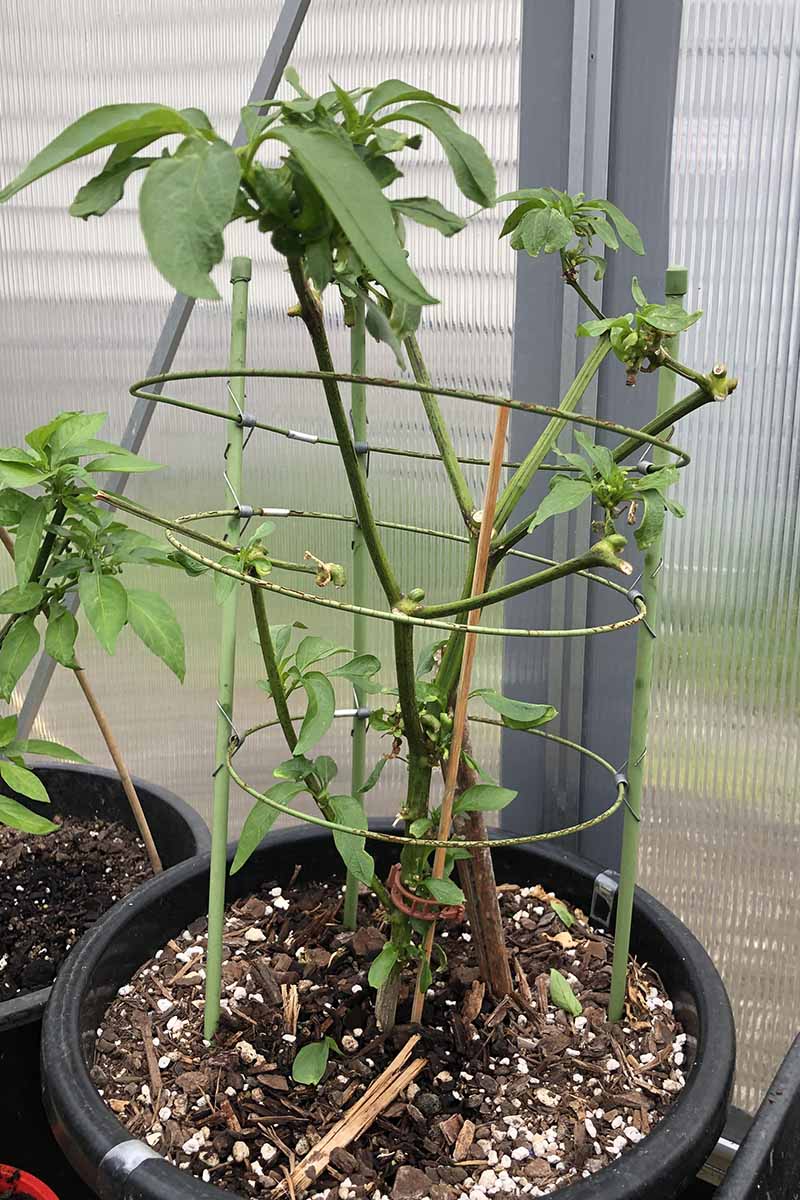
As the temperatures start to warm up in early spring you can move your pepper plants to a location with more light – or put them under a grow light. As they are exposed to longer days, you should see some signs of new growth. Be patient, they can be a little slow to wake up.
What I do is to move my plants out of the shed and into a protected, warm location on my deck for a few hours a day. The goal is that they are exposed to warmer daytime temperatures and more light, but you don’t want to make the mistake of leaving them out overnight.
Alternatively, if you were overwintering your plants on a windowsill in your home, they’ll naturally be exposed to more light.
As soon as you see signs of new growth, you can gradually start to increase your watering. If you applied fertilizer before dormancy, the plants should have everything they need to get a good jump on the growing season.
If not, you can start your regular fertilizing schedule. Learn more about how to fertilize hot peppers in our guide. (coming soon!)

After all risk of frost has passed, you can gradually harden them off in a protected location, over the course of a week, before setting them outdoors permanently.
Be careful of late cold snaps which can wreak havoc with the new growth. Keep them in a location where they will be protected from any sudden temperature changes or consider moving them indoors or covering with a frost cloth overnight.
If you need a refresher on how to care for your pepper plants, take a look at our growing guide.
Feel the Heat Year after Year
For the past few years, I maintained that I was growing “a few” hot peppers and in certain circumstances I’d admit to having “several.”
At last count, I have 87 plants at various stages of maturity. Some are tiny just-germinated seedlings still in their seed flats.

Others are big, healthy seedlings waiting for the warm weather so that they can start to flower. And then there are my overwintered ones, those stalwarts of seasons gone.
I hate to say goodbye to my peppers as the summer gives way to fall – but it’s inevitable that even with the best care, not all my plants will come back next year.
Those that do, typically provide me with a gloriously abundant harvest, topping up my dwindling supply earlier than the baby plants I’ve tended through the spring.
Have you overwintered your hot pepper plants? Are you inspired to try? Let me know in the comments below!
And for more information about growing peppers, check out these guides next:
- How to Plant and Grow Serrano Peppers
- Grow Crunchy, Sweet Bell Peppers in Your Backyard
- How to Grow Ornamental Peppers
Photos by Clare Groom © Ask the Experts, LLC. ALL RIGHTS RESERVED. See our TOS for more details. Uncredited photos: Shutterstock.


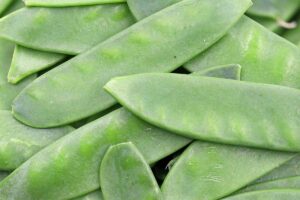
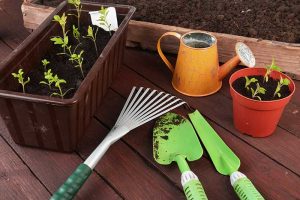
Hey! Good write up on how to overwinter hot peppers. Thanks a lot!
Thanks for the kind words Jill!
Great article! I might try to rescue a couple for a head start next spring. ????????
Thanks! Yes, do try it – you can get a good jump start on the season if your plants survive. Let me know how it goes 🙂
Fascinating. I’m going to try it with some non-hot peppers–what the heck?–even though it sounds like you’ve experienced the trend that “heat of pepper proportional to survivability.” And I thought I had a lot of pepper plants (22) but you have a ton (38)!
Hi Bing, you should definitely try it! They look pretty scraggly in the early spring, but don’t give up on them. What “non-hot” hot peppers are you growing? 🙂
OK: Jimmy Nardello (widely avaialble); Ajvarski (Baker Creek; ‘a Macedonian roasting pepper’ that reminds me of the Monty Python skit about an ‘Austrailian fighting wine’); California Wonder (Botanical Interests); Italian Sweet (Territorial); Etiuda (Baker). They all did very well here in 5b/6. All in containers per Ed Smith’s Vegetable Gardener’s Bible (“simplifies rotation”). Flowers came off until it was warm for outside; they also got a month of “cooler at night” treatment as seedlings. Und all are still producing!
Those sound fantastic! (And I love the Monty Python reference…). I’ve got some super hots with really bizarre names from seed swaps this year. I also prefer to grow mine in containers, it makes overwintering easier – and the inevitable aphid issues more controllable.
I overwintered a half dozen plants last year, Habaneros to Bell peppers with pretty good results. One Habanero produced up to mid December. I Tried my hand a pruning in January with mixed results. The one that produced the best had grown a bit oddly with several shoots off the main trunk and I was afraid to take all of them off. My crop from that plant wasn’t up to par with the results from last year. Several of the pods would begin rotting from the stem end. about half of the pods produced normal fruits. The rest of the… Read more »
Hi Terry, I have found that mileage varies with the pruning. Those that I’ve pruned really hard tend to produce better the next year. But some of them seem to produce quite a lot of foliage on the main stem – in my experience those were the ones that weren’t so happy.
I fertilize once before overwintering with a balanced fertilizer (5-5-5) and leave it at that until spring. For those that keep producing (albeit a little slower), I would continue your regular fertilization schedule right up until you put them “to bed.”
Thanks for the information. Most of my peppers are still in the production stages but the few that have quit will be getting a close shave this year. However I have the one habanero that has a trunk like a small tree and has 4 very stout offshoots.
Hi Clare, Interesting read…I too dread the taking down of the garden in the early fall with such healthy plants with lots of ripe/unripe produce on them. This year I have brought a ghost pepper inside in mid-October to try overwintering. The plant seemed to be severely shocked by the potting process but had begun to produce a few tiny leaves without pruning. I think this is a critical step in overwintering vegetable plants. They have been outside in optimal light conditions and have grown extensive leaf systems to gather the light to produce fruit. My plant did drop most… Read more »
Hi Russ, your plant looks very happy! And I like your thinking – by next year you’ll have a veritable tree on your hands, and a productive one. I currently have a habanero that I really did think I’d pruned too hard, and it was just sticks last winter. This year, it’s producing more pods than I think I’ve ever seen. Big canopy and strong woody stem. I’m excited by this one as I was worried I’d gone too far. I’ll be very interested to see how many pods your Bonsai Bhut produces, so please come back and let me… Read more »
Will do! It currently has 16 tiny pods right now…not sure if I will transplant to the garden this year. I really like the Zen of my Bhut Bonsai in my home office.
Im in zone 9b and was overwintering for the first time. The tips kept turning brown no matter how many times I cut it off! Is this normal? I went from 12 plants last year to 32 this year. Man i got the pepper bug! I’m going to follow your advice and hope for no hard frezzes this next winter! It got cold in Houston i lost all my seedlings when the power was lost for 5 days it was 46 inside my house! Brrrr…!!
Hi Joseph, When you say “the tips” have you cut off the foliage and pruned the plant right back or are the branches themselves dying? I’ve found that some plants just simply give up the ghost over the first winter, but thereafter, the overwintering process is a lot more reliable. Some of my overwintered specimens are so big that I’m going to struggle to find space for them! Sorry to hear you lost your seedlings. And without power, there’s no point suggesting a heat mat! I’ve taken to starting seeds at the beginning of fall – but the downside to… Read more »
I’m in the Austin area and last power in 2021 for 6 days. Luckily my mom lives about 10 miles from me and never lost power. My kids and I, along with all my seedlings went to Grandma’s house!
We just had 4 days of hard freeze this year right after I planted my seeds but luckily we didn’t lose power so 5 days after planting my super hots are sprouting.
I’ve also overwintered a Carolina Reaper some red ghosts and some white ghosts… hopefully they’ll do well come springtime.
Ooh Carolina Reaper and ghosts! I do hope they come back! I’m loving the white ghosts, this is the first year I’ve grown them, normally I stick to the reds. I love the overwintered plants (when they are successful!) as the harvest comes so much earlier!
Tried to overwinter my ghost peppers last year, 6 of them… no luck. Not sure I followed all instructions to a tee… determined to keep trying as I’ve become a true chili head. No such thing as too hot.
Definitely no such thing as “too hot!” Ghosts are a bit tricky when it comes to overwintering – I’ve had good success with some plants and others just shrug and die off. The pruning really does help though.
I have had a bad year this past year. ALL my overwintered peppers have been destroyed, literally. Last years winter turned on me. I had used the same greenhouse(less a few squares of insulation) and the same heater and control link, and had included a couple of 35 gallon tubs of water to help with the heat absorption during the day but the temps got way down below freezing (unexpectedly) for almost a week. When I finally got back into the greenhouse everything was frozen including the two water tubs. They were solid. I tried to get peppers and tomatoes… Read more »
Hello again Terry! Wonderful to hear from you – and I’m so very sorry to hear about your father passing away. As for the peppers, fantastic to hear that you’ve started again and started nice and early! I hope you’ll have a magnificent harvest this year, and that you can try the overwintering again. This past season, some of the older plants didn’t really thrive after the winter, I think we’ve got three or four that are going into their fourth year, but with a combination of very wet weather followed by some drought and heat..it hasn’t been the best… Read more »
Well, good news and bad news. Good news is that I have a full tray of tomato seedlings that are doing well. Bad news, most of my pepper seeds got overheated sitting over a floodlamp as a heat source. I was able salvage about 1/3 (roughly 20) pepper seedlings. I wanted to get a quick start on the season even though I knew we had snow and sleet predicted. I had hoped that my little starter greenhouse (36inch X 36 inch x 60 inch) would stay warm enough on my enclosed patio with the simple heat source I was using.… Read more »
I don’t see my photo attachment. I’ll try again.
Click on the paperclip icon and if you are on a desktop, select one at a time to upload. If you are on mobile, you can select multiple ones in one go. Note, if you have your phone set up to best quality images and you’re trying to load like 20-30 megabyte images, it’s going to take 3-5 seconds per image to upload and process. It’s not as advanced as say the Facebook ap unfortunately. I suspect you are clicking on “post comment” before the images are fully uploaded (you’ll see the busy “hamburger” icon on screen while they are… Read more »
Thank you for your reply Adam. I selected the paperclip icon on the bottom right of the page and the ‘hamburger’ began the ripple thing and shortly stopped. tried twice. I am on a laptop so had to attempt single selection. I will attempt the process again and we’ll see what transpires. ….. It looks like the same results. Thanks for attempting to assist.
Hi Terry, this is your image! I don’t know why it didn’t display properly.
Oh no! That’s awful about your poor seedlings! 50 tomato plants? Oooh that’s lots 🙂 You should be early enough to get some more peppers going though. As you’ll see, I managed to “encourage” your image to display. Not sure what happened there, but I suspect technical trickery vs driver error. Regarding the self-watering tubs, I use these for seedlings a lot. It really helps with them receiving enough moisture but not too much. I’m embarrassed to report that I’ve lost two plants to over-zealous watering this season. Well, perhaps not lost, exactly, but “failing to thrive” would be more… Read more »
Clare believes in self-flagellation of the tongue and is our resident pepper wizard. 😀
I have found a real taste for some of the hotter peppers, but primarily in cooking. Prior to my dad’s passing this last December our favorite breakfast was a concoction I came up with after seeing someone else experimenting with pepper dishes. It consisted of stir frying rice, pork sausage, Chinese style scrambled eggs, minced garlic and at least two and sometimes up to four Habanero chilies diced up into the eggs. I would toss in some onion into the mix if I had some on hand. I learned to add the chilies to the egg mix before frying the eggs or… Read more »
Love this! And you’re right about the vapors.. when I dry the superhots, I have to put the dehydrator out in the shed or the entire house is unusable.
I cut mine got pepper plant back for winter. All winter it. Was fine and now some of the branches have turned black and others brown and are hardening. The plant still has green bark and small branches. Do you know what is going on. Soon I can put it outside, just got to get it to that point.
thank you
Hot pepper, not got pepper
Hi Rob, are you seeing any new shoots developing just yet or is it still too early in the season? I would put it outside when the weather allows, and see what happens. Going woody is perfectly fine, I’ve got three-year-old plants that look like woody shrubs, but the black could be a concern. Please could you upload a picture so I can take a look? I’ve had plants that I was sure were not going to make it, and when I put them outside suddenly they perked up and got back to the business of producing peppers.
Just came across this post! Live in Colorado with large greenhouse. Great success with ghost, datil, sugar rush, cayenne long, death spiral, Carolina reaper, marchant, kalugerista- the list goes on! Yep I’m a maniac ! This article is great. Thanks so much. I will be trying my luck with overwintering this year.
Hi Denise, hooray! A fellow pepperhead! You have some really interesting varieties going on there – a world of pain to be enjoyed 😉
Do give the overwintering a go – the superhots are variable, some come back beautifully, others not so much. Definitely pruning is key. Let me know how you get on!
Calvin the Pepper Geek in his post “Overwintering Pepper Plants – Keep Your Plants for Years” suggests completely washing the root ball of all old soil before repotting in new potting mix for overwintering. He also trims the roots and pots into a smaller container. What do you think of his process in comparison to yours?
Hi Allan, I’m not familiar with his process, but I generally avoid repotting or disturbing the root system just before dormancy. I give my plants an aboveground haircut, which can be pretty stressful for them, so I wouldn’t recommend pruning both roots and foliage, especially in the case of super hots.